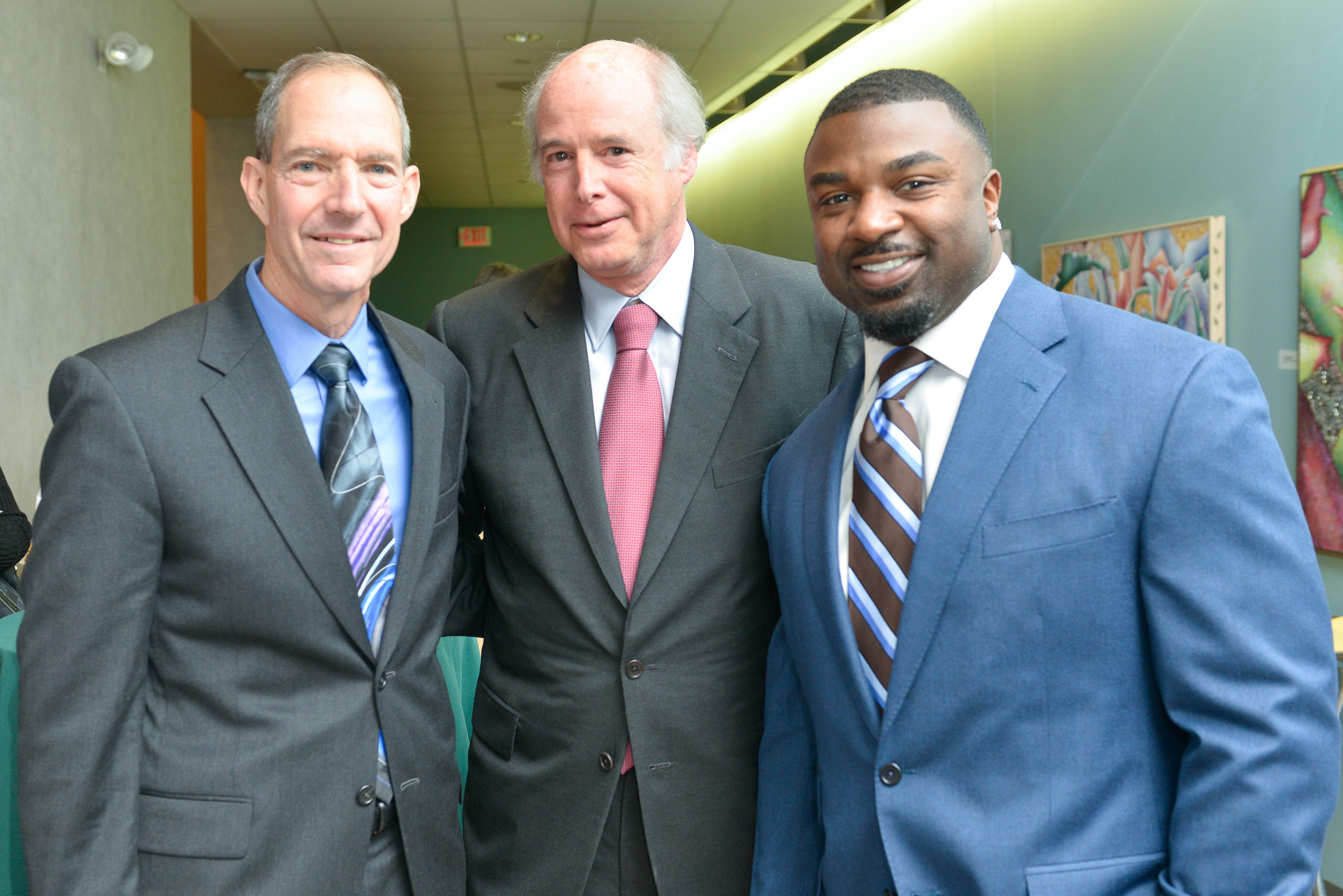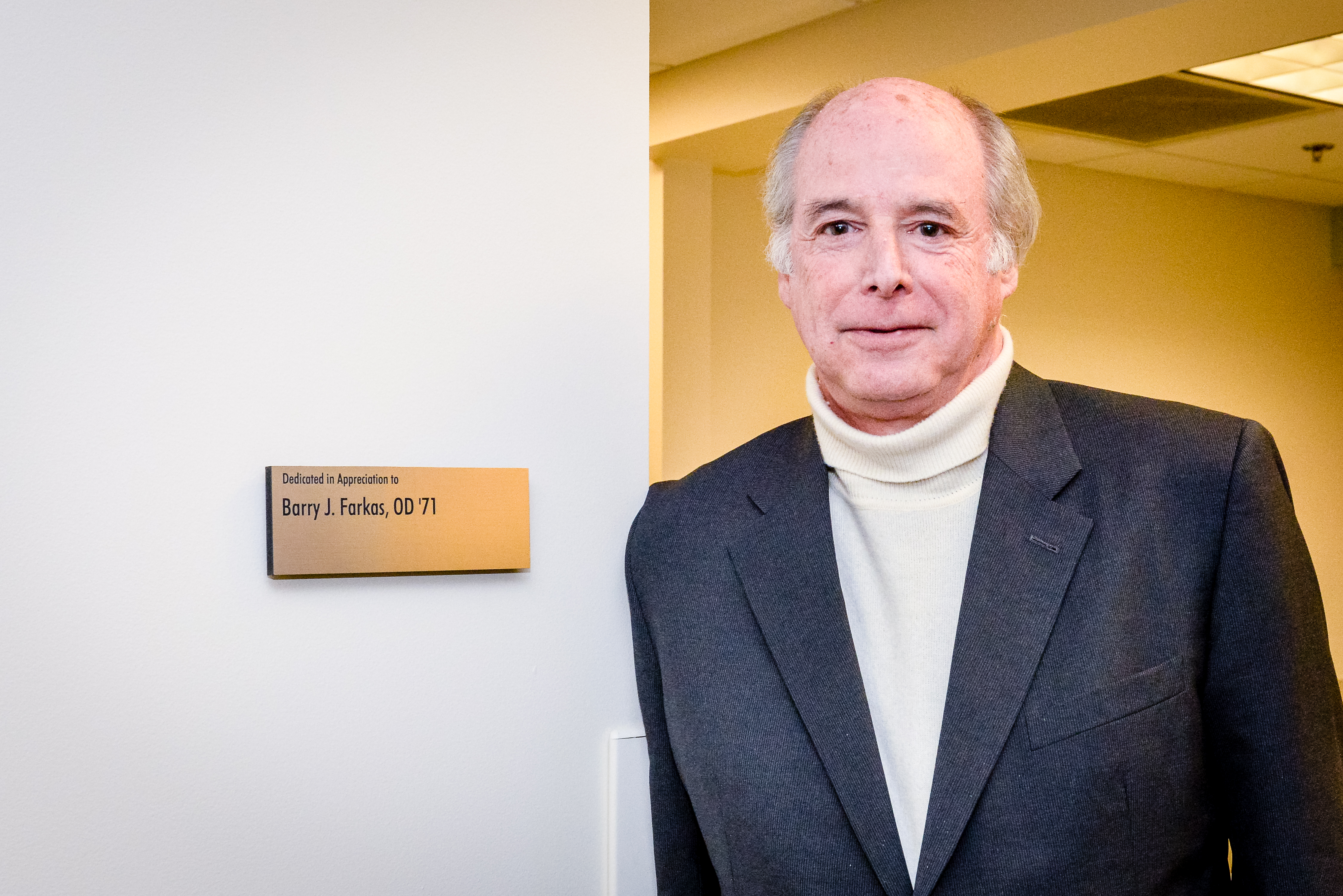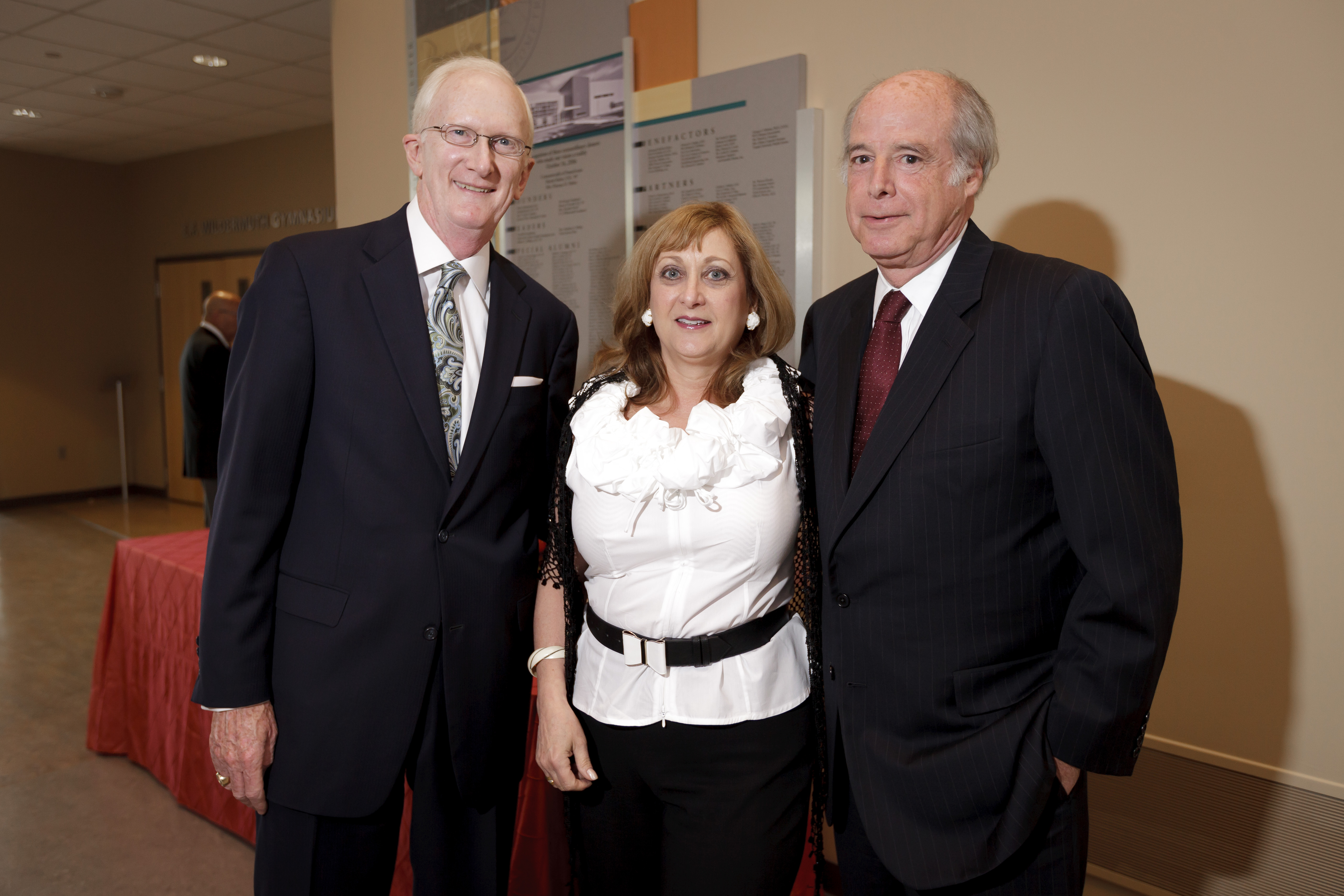 Barry Farkas was down to his last semester at the Pennsylvania College of Optometry (PCO) in 1971 and working at the College’s clinical site on Spring Garden Street in Philadelphia when in walked a mother with a toddler, maybe 18 months old. The kid was cute as could be, but he was uncoordinated and dysfunctional, he kept bumping into everything and would pull things close to him to see them.
Barry Farkas was down to his last semester at the Pennsylvania College of Optometry (PCO) in 1971 and working at the College’s clinical site on Spring Garden Street in Philadelphia when in walked a mother with a toddler, maybe 18 months old. The kid was cute as could be, but he was uncoordinated and dysfunctional, he kept bumping into everything and would pull things close to him to see them.
The clinicians examined the child and determined he needed glasses, which they ordered for him. The child seemed happy once he received his glasses, smiling from ear to ear, but the first thing he did with his improved eyesight was crash into a wall of the clinical site.
Dr. Farkas, ’71, a native of Bronx, N.Y., had an uncle with a contact lens practice in New York City – Farkas, Kassalow and Resnick – the young optometrist-to-be had worked the previous summer in that practice and had learned a little about contact lenses. Dr. Farkas thought the toddler could benefit from contact lenses.
“So I went to the clinic and I said we have to fit this kid with contacts. And, they said no, we can’t do it. Our liability might not cover it and it’s too risky,” said Dr. Farkas. “Do the glasses and then let kid wear them for a while and we’ll talk about it again sometime in the future.”
Dr. Farkas, admittedly a child of the Sixties and not enamored with authority at the time, didn’t think that answer was good enough. His uncle introduced him how to design contact lenses, so Dr. Farkas – on his own – ordered a pair for the child. He had a clandestine meeting with the mother and child at the clinical site after hours and fitted the youngster with the contacts.
And, it changed the child from functionally incapable into a normal child.
 “But it changed my life, too, right there,” said Dr. Farkas. “Because for the first time, I saw the power of what optometry can do.”
“But it changed my life, too, right there,” said Dr. Farkas. “Because for the first time, I saw the power of what optometry can do.”
After graduating from PCO in 1971, Dr. Farkas’ first job was with an 80-year-old female optometrist who was with the Teamsters Union in New York. A lot of interesting Teamsters came through that practice, including one in particular who noticed Dr. Farkas.
“I didn’t know who he was, I just knew that he had an entourage, was about five feet wide and dressed really well,” said Dr. Farkas.
His new acquaintance was none other than John Gotti, at the time a soldier in the Gambino crime family in New York City who would eventually go on to be boss of the family in the mid-1980s. Dr. Farkas said he shared an affinity for horse racing with the gangster who would eventually become known as “The Dapper Don” because of his sharp suits.
From there Dr. Farkas would work in an upscale commercial optometrist office in an elegant part of Manhattan, and then at a Medicaid clinic in the Bronx, honing his optometry skills and learning everything he could about the business part of the profession.
His big break came in 1974, when he was invited to formally join his uncle’s contact lens practice in New York. The uncle, Paul Farkas, OD ‘68, and his partner, Ted Kassalow, OD ’68, had an office in Manhattan, one in the Bronx, and one in Queens. Dr. Farkas was put in charge of the office in his hometown, the Bronx.
“Here was my uncle and his partner and they were one of the first practices in the country to hit a million dollars. And, that’s the practice I went into. I was lucky to get in there,” said Dr. Farkas. “What we did in that practice was we were professional – meaning you do the best you can do for every patient – but we never forgot about commercial. We didn’t see one patient an hour, we were like commercial places that found ways to see five or six people in an hour. We did this with technology; we did it with staff setting up for us; we’d come in and spend five to 10 minutes with the patient doing what we had to do; and then go on to the next room and see the next patient.”
The mid-1970s proved to be a prime time for innovations and advancements in contact lens technology. And, the most important part of the practice, according to Dr. Farkas, was that it stayed on the cutting edge of all the evolving technology.
The first innovation brought the practice during that time came in 1974 from Donald Korb, who was working on the first membrane hydrophilic (soft) contact lens – eventually called the CSI lens – which is considered the grandfather of the modern soft contact lens and the model for 90 percent of all current contemporary contact lens designs.
“More importantly, it was that CSI development that turned our practice around,” said Dr. Farkas. “It was exclusive, everybody knew about it, we were written up in the New York Times, and the practice boomed. Better than that for me was meeting Dr. Donald Korb. Forty years of my learning would eventually come from him.”
Throughout the rest of the 1970s and 1980s, Farkas, Kassalow and Resnick became the go-to practice for every company that came out with a new product and wanted it introduced through the practice.
“We were a PR hub, we had connections in the media and the most extraordinarily high-profile patients,” said Dr. Farkas.
 In 1987, Dr. Farkas was asked to serve on the PCO Board of Trustees by then president Melvin Wolfberg, OD ’51, FAAO. Farkas served on the board for more than 25 years, and was involved in the search for both presidents Thomas Lewis, OD ’70, PhD, FAAO, and Michael H. Mittelman, OD ’80, MPH, MBA, FAAO, FACHE, and the transition from PCO to Salus University.
In 1987, Dr. Farkas was asked to serve on the PCO Board of Trustees by then president Melvin Wolfberg, OD ’51, FAAO. Farkas served on the board for more than 25 years, and was involved in the search for both presidents Thomas Lewis, OD ’70, PhD, FAAO, and Michael H. Mittelman, OD ’80, MPH, MBA, FAAO, FACHE, and the transition from PCO to Salus University.
“Let me tell you something about Tom Lewis. Without his vision, his abilities, his tenacity, I don’t believe Salus University would be anything like it is today,” said Dr. Farkas. “I don’t believe we’d have four shiny buildings up north of Philadelphia and I don’t believe that it would be a university, especially the type that it is right now.”
When it came time to replace Dr. Lewis, Dr. Farkas was even more involved in the search committee. He recalls how during the interview process, Dr. Mittelman was asked by another board member about managing a budget.
“One of the people on the search committee asked him, ‘Mike, have you ever managed a $25 million dollar budget? It’s very complicated.’ And Mike said, ‘No, I haven’t. I have to admit I’ve never done that. But I did manage a $3 and a half billion dollar budget at my hospital. But I really will do my best to manage your budget,’” recalled Dr. Farkas. “But that’s Mike Mittelman. We’re so very lucky to have him.”
In addition to his career success and his longtime service to his alma mater on the Board of Trustees, Dr. Farkas also has a scholarship named after him – the Barry Farkas Scholarship – which helps students aspiring to become optometrists. He admits he’s a little uncomfortable with having a scholarship fund named after himself and said he prefers to keep his philanthropy anonymous. “I’m proud of the money I’ve been able to raise for the College, but the College is the story, I’m not the story.”
Just a few years ago, Dr. Farkas retired from both his practice and the University’s Board of Trustees. When he looks back now, he’s proud of his many accomplishments.
“If you ask me the things I’m most proud of in my professional career, first and foremost without a doubt, is the creating and overseeing – whatever part I had – of this practice, Farkas, Kassalow and Resnick. It’s the single most amazing practice in the country. I have a lot of admiration and appreciation for my partners,” he said. “And Drs. Susan Resnick, Jordan Kassalow and Kevin Rosin are keeping it a great practice.”
He’s also proud of how optometry has progressed and evolved, thanks in large part to the University.
“When I first got to PCO, it was a trade and now it’s a profession – an amazing profession, first rate,” he said. “I am so proud of watching Salus and its growth to what it is right now. Tom Lewis and Mike Mittelman get all the credit. I just happened to be there and lucky enough to be surrounded by giants. That’s how average people end up experiencing life. You gotta be lucky. And, I was lucky.”